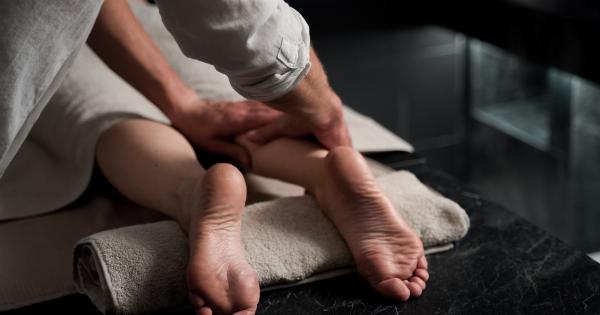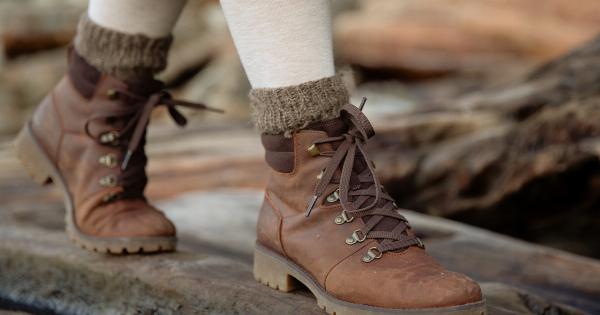Diabetic foot is a common complication associated with diabetes mellitus. It refers to a range of conditions that affect the feet of individuals with diabetes.
Proper foot care is essential for people living with diabetes to prevent the development of diabetic foot and its associated complications, such as ulcers and amputations. In this article, we will explore the causes and symptoms of diabetic foot and discuss effective prevention strategies.
Understanding Diabetes and its Impact on the Feet
Diabetes is a chronic condition characterized by high blood sugar levels. Uncontrolled diabetes can result in various complications, including nerve damage (neuropathy) and poor blood circulation (peripheral vascular disease).
These complications significantly increase the risk of foot problems in individuals with diabetes.
The Causes of Diabetic Foot
Several factors contribute to the development of diabetic foot. The most common causes include:.
1. Neuropathy
Diabetic neuropathy is nerve damage that occurs due to unmanaged blood sugar levels. It primarily affects the peripheral nerves, often leading to decreased sensation in the feet.
This sensory loss can result in injuries going unnoticed, leading to complications.
2. Peripheral Vascular Disease
Peripheral vascular disease refers to the narrowing or blockage of blood vessels that supply the legs and feet. Reduced blood flow to the feet can lead to slow wound healing and an increased risk of infection.
3. Foot Deformities
Prolonged high blood sugar levels can affect the structure and function of the feet, leading to deformities such as hammertoes, claw toes, or Charcot foot.
These deformities can increase pressure points and make the feet more susceptible to injuries and ulcers.
4. Poor Wound Healing
People with diabetes often experience delayed wound healing due to compromised blood circulation and impaired immune function. Small cuts or sores on the feet can quickly become infected and lead to non-healing ulcers.
The Symptoms of Diabetic Foot
Recognizing the early signs of diabetic foot is crucial for prompt intervention. The common symptoms of diabetic foot include:.
1. Numbness or Tingling Sensation
Diabetic neuropathy can cause a loss of sensation in the feet, leading to feelings of numbness or a tingling sensation. This symptom often precedes the development of ulcers or other injuries.
2. Skin Changes
Individuals with diabetic foot may experience skin changes such as dryness, cracking, or the development of calluses. These changes can make the skin more vulnerable to injury and infections.
3. Foot Ulcers
Ulcers are open sores that typically develop on the bottom of the feet. They can be shallow or deep and are often accompanied by pain, redness, or discharge. Prompt medical attention is necessary to prevent complications.
4. Poor Nail Health
Diabetic foot can also affect the health of the nails. Common nail abnormalities include thickening, yellowing, or the presence of fungal infections. Proper nail care is essential to prevent further complications.
Preventing Diabetic Foot
Preventing diabetic foot involves a combination of self-care measures and regular healthcare interventions. Here are some preventive strategies:.
1. Maintain Proper Blood Sugar Control
Keeping blood sugar levels within the target range is crucial for reducing the risk of complications. Individuals with diabetes should adhere to a proper diet, engage in regular physical activity, and take prescribed medications as directed.
2. Check Feet Daily
Performing daily foot checks can help identify any abnormalities or injuries early on. Look for redness, blisters, cuts, or any changes in skin or nail health. Promptly consult a healthcare professional if any concerning signs are noticed.
3. Practice Good Foot Hygiene
Wash feet daily with lukewarm water and mild soap. Gently pat them dry, especially between the toes. Apply a moisturizer, except between the toes, to prevent dry skin. Avoid soaking the feet, as excessive moisture can lead to fungal infections.
4. Choose Suitable Footwear
Opt for comfortable shoes that provide adequate support and cushioning. Make sure they are properly fitted and don’t cause pressure points or rubbing. Avoid high heels and tight shoes that can restrict blood flow.
5. Trim Nails Carefully
Trim nails straight across and file any sharp edges. Avoid cutting them too short or digging into the corners, as this can lead to ingrown toenails. If necessary, seek professional assistance for nail care.
6. Manage Foot Deformities
If you have foot deformities, consult a podiatrist or orthopedic specialist for appropriate footwear recommendations or custom orthotic devices. These can help relieve pressure, redistribute weight, and prevent further deformities.
7. Regular Foot Examinations
Regular foot examinations by a healthcare professional are essential, especially for individuals with existing foot complications. These examinations help identify any potential issues early and allow for timely intervention.
8. Avoid Smoking and Alcohol
Smoking and excessive alcohol consumption can exacerbate the complications of diabetes. Quitting smoking and limiting alcohol intake can improve overall health and reduce the risk of diabetic foot problems.
9. Maintain a Healthy Weight
Managing a healthy weight through a balanced diet and regular exercise not only supports blood sugar control but also reduces pressure on the feet. Excess weight can increase the risk of foot complications in individuals with diabetes.
In Conclusion
Diabetic foot is a serious complication of diabetes that can lead to ulcers, infections, and even amputations.
However, with proper foot care and preventive measures, the risk of developing diabetic foot and its associated complications can be significantly reduced. Managing blood sugar levels, inspecting the feet regularly, practicing good foot hygiene, wearing suitable footwear, and seeking professional care when needed are vital steps in preventing diabetic foot.
Remember, early intervention is key to maintaining foot health and overall well-being for individuals living with diabetes.





























